-
 Bitcoin
Bitcoin $84,734.8249
-0.50% -
 Ethereum
Ethereum $1,594.1623
-0.39% -
 Tether USDt
Tether USDt $1.0000
0.01% -
 XRP
XRP $2.0674
-1.00% -
 BNB
BNB $593.9520
0.29% -
 Solana
Solana $139.3397
0.42% -
 USDC
USDC $1.0000
0.01% -
 Dogecoin
Dogecoin $0.1569
-1.33% -
 TRON
TRON $0.2416
-0.09% -
 Cardano
Cardano $0.6245
-0.91% -
 UNUS SED LEO
UNUS SED LEO $9.3277
-0.33% -
 Chainlink
Chainlink $12.9746
0.85% -
 Avalanche
Avalanche $19.6103
0.48% -
 Stellar
Stellar $0.2447
-0.92% -
 Toncoin
Toncoin $2.9844
-0.21% -
 Shiba Inu
Shiba Inu $0.0...01238
1.47% -
 Sui
Sui $2.1341
-0.78% -
 Hedera
Hedera $0.1641
-1.30% -
 Bitcoin Cash
Bitcoin Cash $334.7157
-1.07% -
 Polkadot
Polkadot $3.8717
3.85% -
 Hyperliquid
Hyperliquid $17.7266
-2.23% -
 Litecoin
Litecoin $76.5582
0.51% -
 Bitget Token
Bitget Token $4.4968
0.91% -
 Dai
Dai $0.9999
-0.01% -
 Ethena USDe
Ethena USDe $0.9992
0.01% -
 Pi
Pi $0.6322
-2.17% -
 Monero
Monero $216.7871
1.87% -
 Uniswap
Uniswap $5.2694
-0.02% -
 Pepe
Pepe $0.0...07469
2.80% -
 OKB
OKB $50.6357
0.12%
What is tracking error?
Understanding tracking error is crucial for evaluating portfolio performance, as it measures the deviation between a portfolio's returns and its designated benchmark, influenced by factors such as active management decisions and portfolio composition.
Jan 06, 2025 at 04:02 pm
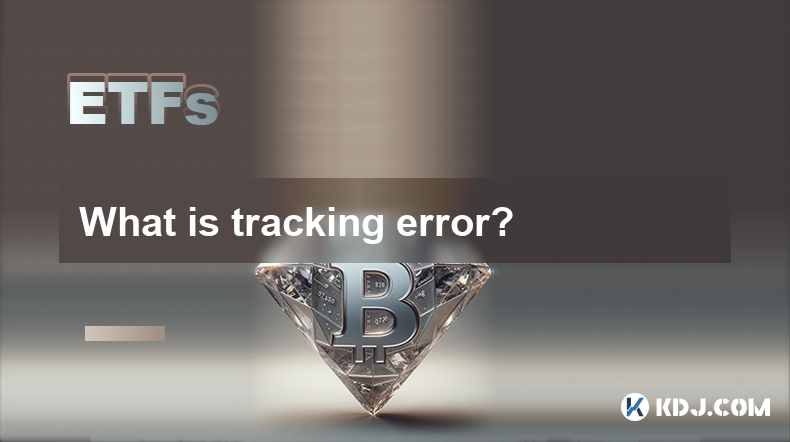
Key Points:
- Definition of tracking error
- Sources of tracking error
- Types of tracking error
- Measuring tracking error
- Impact of tracking error on investment returns
- Managing tracking error
What is Tracking Error?
Tracking error is a measure of the difference between the performance of an investment portfolio and its benchmark. It indicates how closely the portfolio mirrors the benchmark's performance, with a lower tracking error denoting a closer alignment.
Sources of Tracking Error:
- Active portfolio management: Deviations from the benchmark may result from active management decisions aimed at enhancing returns.
- Different portfolio composition: Asset allocation, security selection, and sector/industry weightings can contribute to divergences in portfolio performance.
- Transaction costs: Trading activity can incur costs that affect overall portfolio performance and create deviations from the benchmark.
- Investment style differences: Specific investment strategies or styles (e.g., value, growth, momentum) can lead to distinct portfolio characteristics.
- Market factors: Unanticipated market events or sector-specific fluctuations can impact portfolio performance differently from the benchmark.
Types of Tracking Error:
- Absolute tracking error: Measures the absolute difference in returns between the portfolio and the benchmark.
- Squared tracking error: Weights the absolute return differences, emphasizing larger deviations from the benchmark.
- Information ratio tracking error: Adjusts tracking error for the level of active risk taken by the portfolio, providing a risk-adjusted measure of tracking error.
Measuring Tracking Error:
- Calculate the difference in returns between the portfolio and the benchmark over a specified period.
- Determine the annualized standard deviation of the return differences.
- Express the tracking error as a percentage or basis points.
Impact of Tracking Error on Investment Returns:
- Performance comparison: A high tracking error implies significant deviation from the benchmark, which may impact the portfolio's ability to achieve its investment objectives.
- Risk assessment: Tracking error reflects the portfolio's volatility relative to the benchmark and can provide insights into the level of risk associated with the portfolio.
- Cost evaluation: Excessive trading costs or active management fees can contribute to higher tracking error and potentially hinder investment returns.
Managing Tracking Error:
- Benchmark selection: Choose a benchmark that aligns with the portfolio's investment strategy and risk tolerance.
- Active management strategy: Balance active risk and tracking error to optimize portfolio performance within acceptable parameters.
- Portfolio optimization: Utilize techniques like diversification and risk management to reduce tracking error while maintaining desired returns.
- Monitoring and evaluation: Regularly review tracking error to identify trends and make necessary adjustments to the portfolio.
FAQs:
Q: What is an acceptable tracking error?
A: The acceptable level of tracking error depends on the investment strategy and objectives. For passive funds, it should be close to zero, while for actively managed funds, some degree of tracking error may be acceptable.
Q: How can I reduce tracking error in my portfolio?
A: Diversify asset allocation, minimize transaction costs, and align the portfolio's investment style with the benchmark to reduce tracking error.
Q: What are the advantages of a low tracking error?
A: A low tracking error indicates a close alignment with the benchmark, which may lead to improved risk management, cost efficiency, and enhanced investment returns.
Q: What are the disadvantages of a high tracking error?
A: A high tracking error may denote excessive risk-taking or poor investment decisions, potentially compromising portfolio performance and investor expectations.
Q: How frequently should I monitor tracking error?
A: Tracking error should be monitored regularly, typically on a quarterly or semi-annual basis, to ensure alignment with investment objectives and to make necessary adjustments to the portfolio.
Disclaimer:info@kdj.com
The information provided is not trading advice. kdj.com does not assume any responsibility for any investments made based on the information provided in this article. Cryptocurrencies are highly volatile and it is highly recommended that you invest with caution after thorough research!
If you believe that the content used on this website infringes your copyright, please contact us immediately (info@kdj.com) and we will delete it promptly.
- Jesse Pollak, the creator of Ethereum layer 2 blockchain Base, apologizes for the controversial artwork
- 2025-04-20 15:55:13
- Pi Network (PI) price drops 0.48% in the past 24 hours, now trading at $0.6219
- 2025-04-20 15:55:13
- Qubetics ($TICS) Leads the Charge as Crypto Season Heats Up. Here Are 4 Tokens to Watch
- 2025-04-20 15:50:12
- PepeX Captures the Attention of De-Risking Bitcoin Holders as BTC Markets Remain Rangebound
- 2025-04-20 15:50:12
- Cryptocurrency Continues to Break Barriers, and as 2025 Approaches
- 2025-04-20 15:45:13
- Despite its Origins as a Playful Memecoin, Dogecoin Now Stands on the Precipice of a Significant Market Rally
- 2025-04-20 15:45:13
Related knowledge

What role does SEC play in Bitcoin ETF approval?
Feb 25,2025 at 06:48am
Key Points:SEC's Role in Bitcoin ETF Approval ProcessHistorical Efforts to Establish a Bitcoin ETFSEC's Criteria for Bitcoin ETF ApprovalPotential Impact of a Bitcoin ETF on the Cryptocurrency MarketTimeline and Outlook for Bitcoin ETF ApprovalArticle:SEC Play in Bitcoin ETF ApprovalThe United States Securities and Exchange Commission (SEC) plays a crit...
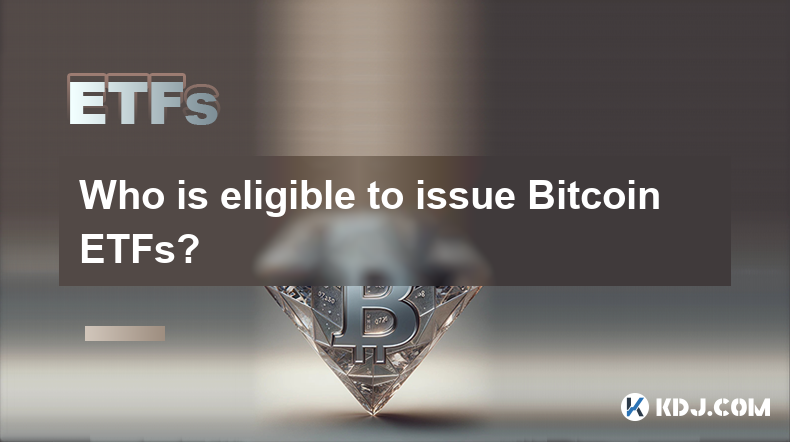
Who is eligible to issue Bitcoin ETFs?
Feb 25,2025 at 11:13am
Key Points:Only regulated financial institutions with the necessary expertise and infrastructure are eligible to issue Bitcoin ETFs.The Securities and Exchange Commission (SEC) has not yet approved any spot Bitcoin ETFs, but has approved several futures-based ETFs.Applicants must meet stringent requirements, including having a strong track record and su...
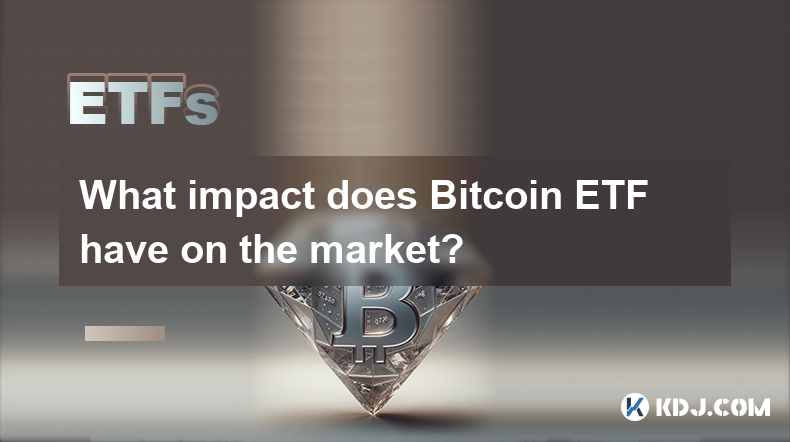
What impact does Bitcoin ETF have on the market?
Feb 25,2025 at 11:37am
Key Points:Introduction to Bitcoin ETFs and their role in the cryptocurrency marketHistorical development and performance of Bitcoin ETFsPotential benefits of Bitcoin ETFs for investors and the marketRisks and limitations associated with Bitcoin ETFsRegulatory considerations and their impact on Bitcoin ETFsArticle:Introduction to Bitcoin ETFsBitcoin exc...
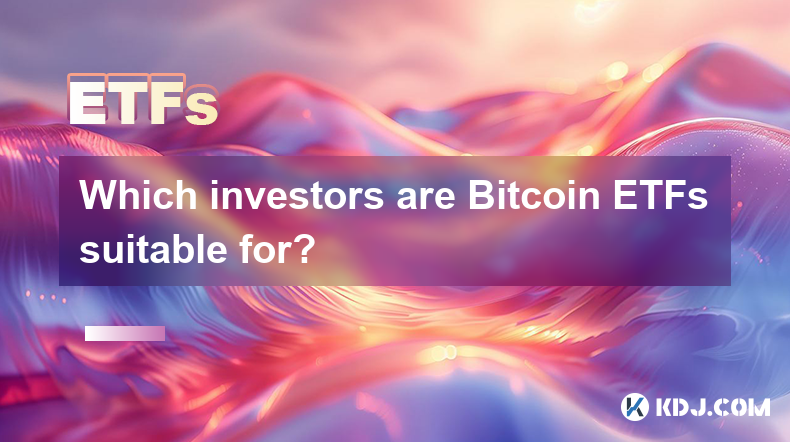
Which investors are Bitcoin ETFs suitable for?
Feb 27,2025 at 04:01pm
Key Points:Understanding Bitcoin ETFsBenefits of Bitcoin ETFsSuitability of Bitcoin ETFs for Different InvestorsAssessing Risk Tolerance and Investment GoalsConsidering Short-Term and Long-Term StrategiesExamining Tax ImplicationsSeeking Professional AdviceUnderstanding Bitcoin ETFsBitcoin exchange-traded funds (ETFs) are investment vehicles that track ...
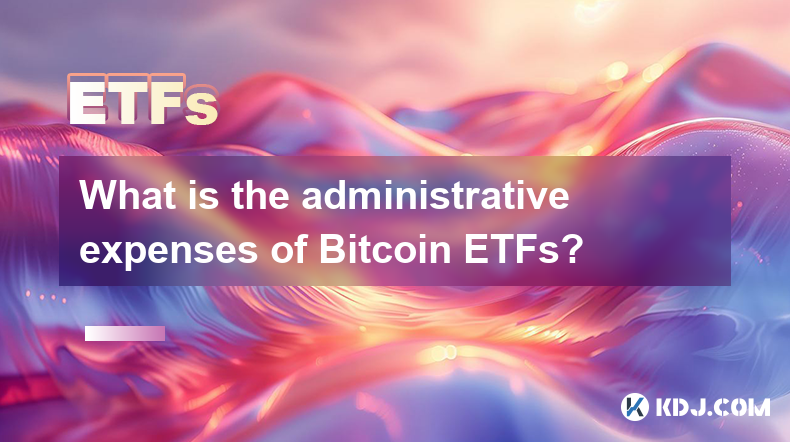
What is the administrative expenses of Bitcoin ETFs?
Feb 26,2025 at 12:24am
Key Points:Administrative expenses are a crucial factor to consider when evaluating Bitcoin ETFs.These expenses can significantly impact the performance of the fund and ultimately the investor's returns.Understanding the various components of administrative expenses is essential for informed decision-making.Comparing administrative expenses across diffe...
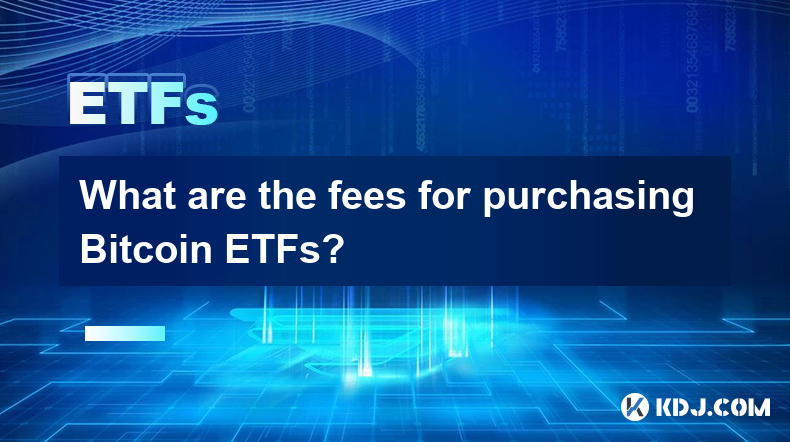
What are the fees for purchasing Bitcoin ETFs?
Feb 27,2025 at 07:13pm
Key Points:Bitcoin exchange-traded funds (ETFs) are a cost-effective and regulated way to gain exposure to Bitcoin.Fees associated with Bitcoin ETF purchases vary depending on the platform, trading volume, and account type.It is essential to evaluate fee structures carefully to optimize investment returns.Fees Associated with Purchasing Bitcoin ETFs1. B...

What role does SEC play in Bitcoin ETF approval?
Feb 25,2025 at 06:48am
Key Points:SEC's Role in Bitcoin ETF Approval ProcessHistorical Efforts to Establish a Bitcoin ETFSEC's Criteria for Bitcoin ETF ApprovalPotential Impact of a Bitcoin ETF on the Cryptocurrency MarketTimeline and Outlook for Bitcoin ETF ApprovalArticle:SEC Play in Bitcoin ETF ApprovalThe United States Securities and Exchange Commission (SEC) plays a crit...

Who is eligible to issue Bitcoin ETFs?
Feb 25,2025 at 11:13am
Key Points:Only regulated financial institutions with the necessary expertise and infrastructure are eligible to issue Bitcoin ETFs.The Securities and Exchange Commission (SEC) has not yet approved any spot Bitcoin ETFs, but has approved several futures-based ETFs.Applicants must meet stringent requirements, including having a strong track record and su...

What impact does Bitcoin ETF have on the market?
Feb 25,2025 at 11:37am
Key Points:Introduction to Bitcoin ETFs and their role in the cryptocurrency marketHistorical development and performance of Bitcoin ETFsPotential benefits of Bitcoin ETFs for investors and the marketRisks and limitations associated with Bitcoin ETFsRegulatory considerations and their impact on Bitcoin ETFsArticle:Introduction to Bitcoin ETFsBitcoin exc...

Which investors are Bitcoin ETFs suitable for?
Feb 27,2025 at 04:01pm
Key Points:Understanding Bitcoin ETFsBenefits of Bitcoin ETFsSuitability of Bitcoin ETFs for Different InvestorsAssessing Risk Tolerance and Investment GoalsConsidering Short-Term and Long-Term StrategiesExamining Tax ImplicationsSeeking Professional AdviceUnderstanding Bitcoin ETFsBitcoin exchange-traded funds (ETFs) are investment vehicles that track ...

What is the administrative expenses of Bitcoin ETFs?
Feb 26,2025 at 12:24am
Key Points:Administrative expenses are a crucial factor to consider when evaluating Bitcoin ETFs.These expenses can significantly impact the performance of the fund and ultimately the investor's returns.Understanding the various components of administrative expenses is essential for informed decision-making.Comparing administrative expenses across diffe...

What are the fees for purchasing Bitcoin ETFs?
Feb 27,2025 at 07:13pm
Key Points:Bitcoin exchange-traded funds (ETFs) are a cost-effective and regulated way to gain exposure to Bitcoin.Fees associated with Bitcoin ETF purchases vary depending on the platform, trading volume, and account type.It is essential to evaluate fee structures carefully to optimize investment returns.Fees Associated with Purchasing Bitcoin ETFs1. B...
See all articles























































































